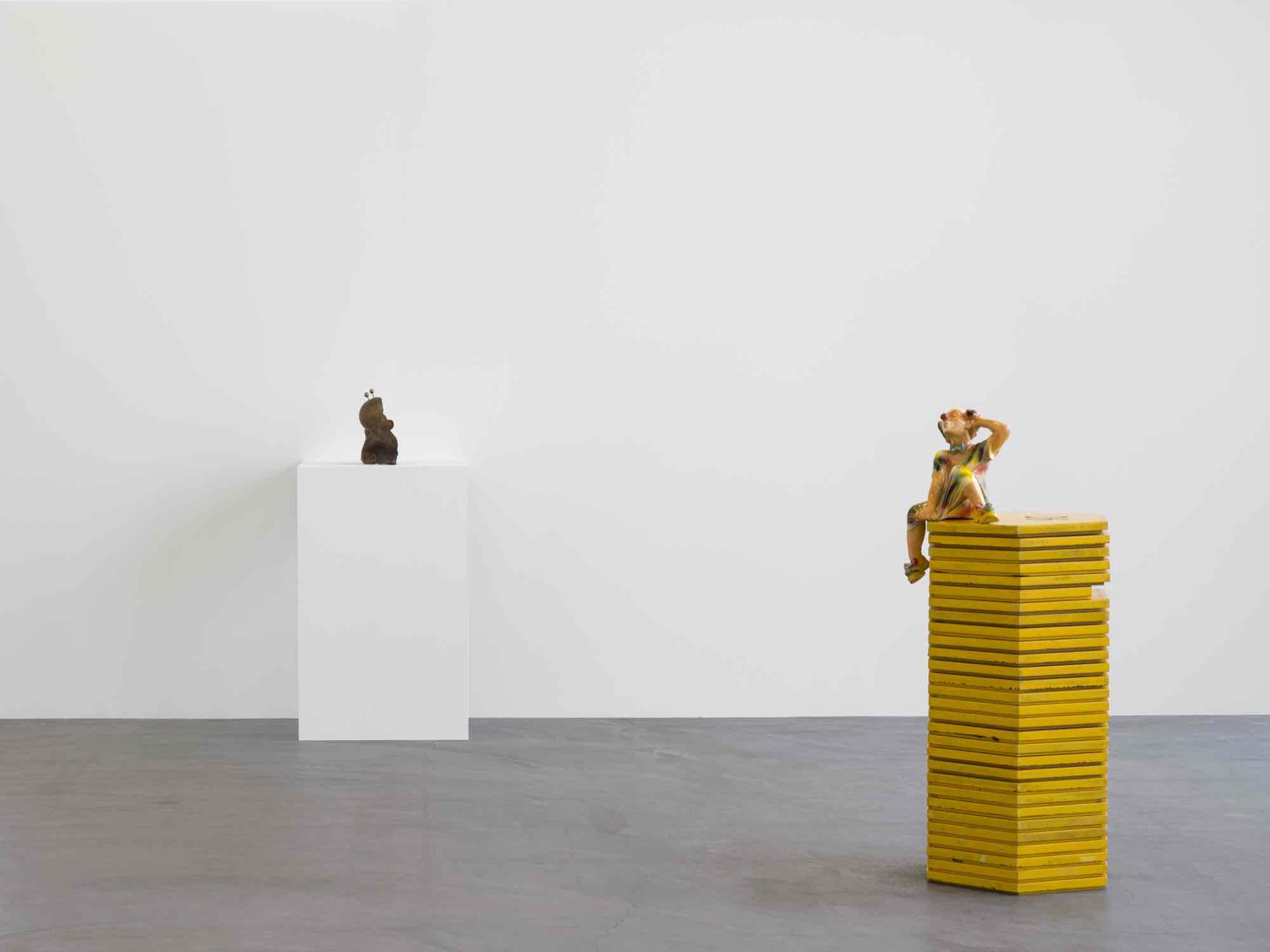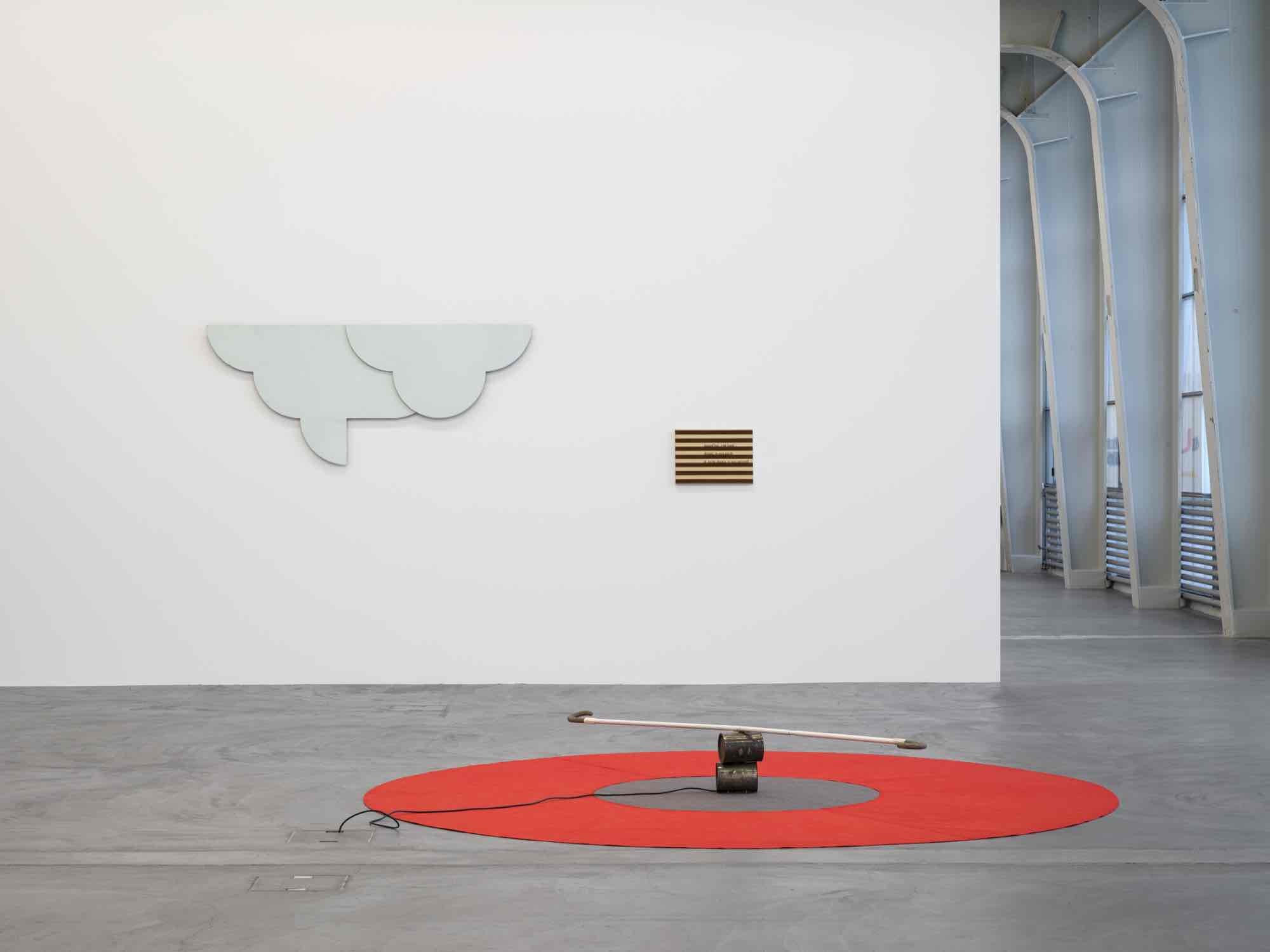Ana Jotta
Composição
08 Jun - 15 Sep 2024
A simple, open-ended question triggered the thinking behind this exhibition: how do you introduce the work of Ana Jotta (b. Lisbon, 1946) to a public that, on the whole, is unfamiliar with it? In other words, how can one reveal her radically polymorphous work when, given the size of the exhibition, the possibility of showing its full breadth and diversity had been dismissed at the outset?
The exhibition title Composição (Composition), borrowed from one of the works, neither alludes to nor comments on the artist’s practice; it refers instead to the exhibition itself as a construct in the double sense of a process and an outcome. Rather than adopting a certain framework of reference or point of view when selecting the artworks, one basic rule was followed: to choose an artwork and thus set in motion a process of association between works that enhances an understanding of the artist’s work, providing insight into the intricacies of her practice and the idiosyncrasy of her subjective world. It was an intuitive and open-ended heuristic process with neither map nor compass.
Underlying the process of selection was a wish to compose a kaleidoscopic exhibition that could reflect the astonishing formal diversity that characterises Jotta’s artistic output. The exhibition provides ample evidence of her versatility with different materials and techniques. What may be disconcerting for someone unfamiliar with her work, however, is the absence of a recognisable style as a common denominator for the pieces shown here, or at least some of them. The result is what looks as if it might be a group exhibition.
In fact, Jotta’s work has never had a specific style. The varied character of her output was already clearly noticeable during her early career, when she took part in several group exhibitions. Since 1986, when she produced the series of paintings that would be shown in her first solo exhibition the following year, the development of her work has been marked by a succession of series. Each new one, as a rule, is very different both in terms of medium and style from that which preceded it. Eschewing any chronological linearity, constantly foiling any possibility of arrangement by phase or period, Jotta’s artistic trajectory is punctuated by successive deviations and discontinuities, throughout which she has prodigiously expanded her realm of creative possibilities, step by step. She doesn’t do it strategically. It is instead a reflection of her temperament: she dislikes retracing her footsteps. Curiously enough, the process of selecting the works for this exhibition eventually focused on those that do not belong to any series or group – she calls them her only children. Amid what seem like an atomised exhibition, the attributes that have been common to the artist’s practice for over four decades come to the fore: a certain frugality of means; a conciseness of expression; and an energetic and spirited mind. This is her signature.
Appropriation is at the heart of Jotta’s modus operandi. She is an omnivorous appropriationist who recycles and transforms the most disparate things. Her idiosyncratic repertoire is made up of found objects (with a predilection for insignificant objects that have had a life of their own), all kinds of images (works by illustrious artists or renowned comic book authors, illustrations from children’s colouring books or vernacular images, to name just a few) and text taken from a variety of sources (quotes from a French language textbook, for example, the name of a well-known encyclopaedic collection of books, the title of a film or book, or a printed text found posted in the street). Her choices are not driven by the principle of aesthetic indifference that Marcel Duchamp associated with the ready-made; they are invariably governed by identification or affection. They can truly be said to demonstrate a form of sensibility, showing her taste for very different things. She does not care, however, and never has, to comment or reflect on the things that she appropriates and their original meanings.
Jotta sees the appropriated materials, including artwork, as fragments of life, of her life; therefore art, as she delightfully puts it, is a quotation from life. ‘In one’s work,’ she wrote in a 2002 letter to an art critic, ‘what isn’t a quotation? It’s about life, the raw material, which is first processed and then quoted. Life doesn’t need work; it needs maintenance and a little expedience. Work needs work (it’s a highly specific blood type – it only accepts its own). It is a quotation of life, proffered and manifest, that enters through the eyes. So, it is always a representation. It can be sharp, produced in a workshop, made by a single person, a single parent. It enters through the eyes and leaves through the eyes – the mirror of the soul.’
In 2010, in one of the short texts she has written over the last eighteen years to accompany her exhibitions, she writes, ‘Now, we know, I know, nulla è nuovo (nothing is new, nothing new); I could also use a quote (and an old one at that...): “Within the world there is no place for other creations. There is just an opportunity for reintegration and continuity. Everything that could exist already exists. Nothing else can be created but revealed.”’ (Spinoza, quoted by Clarice Lispector)
In another of her short texts a year later she wittily says, to allay any doubts: ‘I can assure you that, as a singular person rather than a collective entity, it was all done by me.’ – Miguel Wandschneider
The exhibition is curated by Miguel Wandschneider
The exhibition title Composição (Composition), borrowed from one of the works, neither alludes to nor comments on the artist’s practice; it refers instead to the exhibition itself as a construct in the double sense of a process and an outcome. Rather than adopting a certain framework of reference or point of view when selecting the artworks, one basic rule was followed: to choose an artwork and thus set in motion a process of association between works that enhances an understanding of the artist’s work, providing insight into the intricacies of her practice and the idiosyncrasy of her subjective world. It was an intuitive and open-ended heuristic process with neither map nor compass.
Underlying the process of selection was a wish to compose a kaleidoscopic exhibition that could reflect the astonishing formal diversity that characterises Jotta’s artistic output. The exhibition provides ample evidence of her versatility with different materials and techniques. What may be disconcerting for someone unfamiliar with her work, however, is the absence of a recognisable style as a common denominator for the pieces shown here, or at least some of them. The result is what looks as if it might be a group exhibition.
In fact, Jotta’s work has never had a specific style. The varied character of her output was already clearly noticeable during her early career, when she took part in several group exhibitions. Since 1986, when she produced the series of paintings that would be shown in her first solo exhibition the following year, the development of her work has been marked by a succession of series. Each new one, as a rule, is very different both in terms of medium and style from that which preceded it. Eschewing any chronological linearity, constantly foiling any possibility of arrangement by phase or period, Jotta’s artistic trajectory is punctuated by successive deviations and discontinuities, throughout which she has prodigiously expanded her realm of creative possibilities, step by step. She doesn’t do it strategically. It is instead a reflection of her temperament: she dislikes retracing her footsteps. Curiously enough, the process of selecting the works for this exhibition eventually focused on those that do not belong to any series or group – she calls them her only children. Amid what seem like an atomised exhibition, the attributes that have been common to the artist’s practice for over four decades come to the fore: a certain frugality of means; a conciseness of expression; and an energetic and spirited mind. This is her signature.
Appropriation is at the heart of Jotta’s modus operandi. She is an omnivorous appropriationist who recycles and transforms the most disparate things. Her idiosyncratic repertoire is made up of found objects (with a predilection for insignificant objects that have had a life of their own), all kinds of images (works by illustrious artists or renowned comic book authors, illustrations from children’s colouring books or vernacular images, to name just a few) and text taken from a variety of sources (quotes from a French language textbook, for example, the name of a well-known encyclopaedic collection of books, the title of a film or book, or a printed text found posted in the street). Her choices are not driven by the principle of aesthetic indifference that Marcel Duchamp associated with the ready-made; they are invariably governed by identification or affection. They can truly be said to demonstrate a form of sensibility, showing her taste for very different things. She does not care, however, and never has, to comment or reflect on the things that she appropriates and their original meanings.
Jotta sees the appropriated materials, including artwork, as fragments of life, of her life; therefore art, as she delightfully puts it, is a quotation from life. ‘In one’s work,’ she wrote in a 2002 letter to an art critic, ‘what isn’t a quotation? It’s about life, the raw material, which is first processed and then quoted. Life doesn’t need work; it needs maintenance and a little expedience. Work needs work (it’s a highly specific blood type – it only accepts its own). It is a quotation of life, proffered and manifest, that enters through the eyes. So, it is always a representation. It can be sharp, produced in a workshop, made by a single person, a single parent. It enters through the eyes and leaves through the eyes – the mirror of the soul.’
In 2010, in one of the short texts she has written over the last eighteen years to accompany her exhibitions, she writes, ‘Now, we know, I know, nulla è nuovo (nothing is new, nothing new); I could also use a quote (and an old one at that...): “Within the world there is no place for other creations. There is just an opportunity for reintegration and continuity. Everything that could exist already exists. Nothing else can be created but revealed.”’ (Spinoza, quoted by Clarice Lispector)
In another of her short texts a year later she wittily says, to allay any doubts: ‘I can assure you that, as a singular person rather than a collective entity, it was all done by me.’ – Miguel Wandschneider
The exhibition is curated by Miguel Wandschneider



